#arizona drought
Text
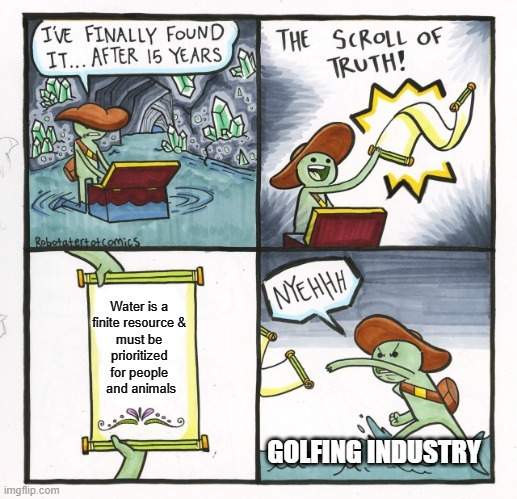
Arizona is being forced to cut nearly 25% of its water sourced from the Colorado River. We're in an extreme drought. Drinking water is essential for human and animal life.
While the golf course industry uses graphs and charts to show that they don't use that much water and they bring in big bucks to the economy, I propose they try upping their game instead.
Rather than using up our precious drinking water (every drop counts) on grass for playing golf, why don't they go hard core and learn to play on hard pan dirt. I mean, it's a sport and sport is about challenges, right?
Golfers, challenge yourself and leave the water for drinking!
#drought#arizona drought#colorado river#climate change#drinking water#golf#golfing industry#save water#environment#this goes for other nonessential uses of drinking water#in this hi-tech age why aren't they using astroturf or something#you can't drink money
269 notes
·
View notes
Video
Light Traffic by James Marvin Phelps
Via Flickr:
Light Traffic Hoover Dam Nevada-Arizona
#nevada#arizona#hoover dam#intake towers#dam#black canyon#colorado river#lake mead#usa#southwest#water#reservoir#drought#climate change#river#lake#las vegas#photography#bureau of reclamation#lake mead national recreation area#james marvin phelps photography#night#lights#light trails#flickr
25 notes
·
View notes
Text

Bathtub rings. Lake Mead at Boulder Dam, 1 April 2023.
50 notes
·
View notes
Photo
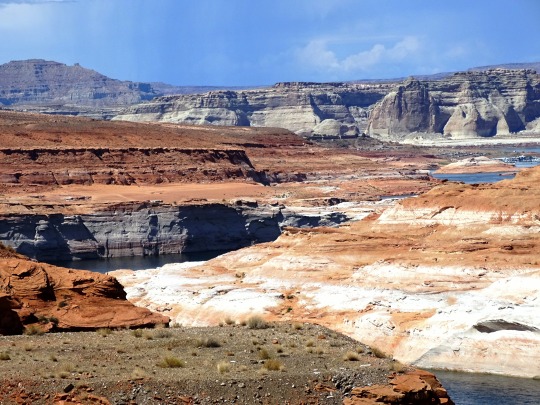
Drought
What do you think about my pic?
#Lake Powell#Page#Arizona#desert#geology#landscape#rock formation#rain clouds#original photography#summer 2022#tourist attraction#drought#landmark#vacation#travel#flora#nature#grass#countryside#USA#Coconino County#Glen Canyon National Recreation Area#Colorado Plateau#photo of the day#What do you think about my pic?#water level
49 notes
·
View notes
Text
Unveiling the Desert's Charm: Growing Penstemons and Wildflowers in Queen Creek, Arizona
Transforming Arid Landscapes into Blossoming Gardens
In the heart of the Sonoran Desert, amidst the dry, rugged landscape of Queen Creek, Arizona, lies the potential for a blooming oasis. The key to this transformation? A brilliant array of penstemons and native wildflowers. This article will guide you through selecting the best penstemons for the low desert and companion wildflowers to create a…
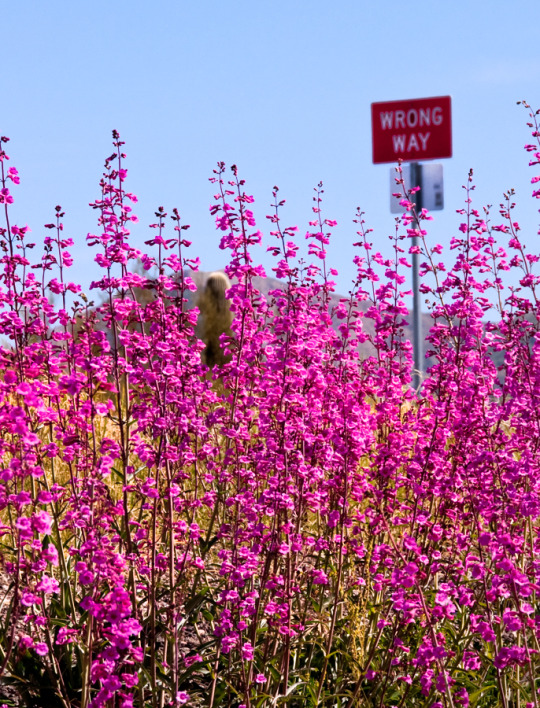
View On WordPress
#Desert Beardtongue#desert gardening#Desert Landscaping#Drought-Tolerant Plants#Eco-Friendly Gardening#Firecracker Penstemon#Garden Design#Growing Wildflowers#Hummingbird-Friendly Gardening#Native Plants#Penstemon Cultivation#Penstemon eatonii#Penstemon parryi#Penstemon pseudospectabilis#Pollinator Gardens#Queen Creek Arizona#Seed Germination#Sustainable Gardening#Xeriscaping
4 notes
·
View notes
Text
In rural Arizona’s La Paz County, on the state’s rugged border with California, the decision by a Saudi-owned dairy company to grow alfalfa in the American Southwest for livestock in the Gulf kingdom first raised eyebrows nearly a decade ago. Now, worsening drought has focused new attention on the company and whether Arizona should be doing more to protect its groundwater resources.
Amid a broader investigation by the state attorney general, Arizona last week rescinded a pair of permits that would have allowed Fondomonte Arizona, a subsidiary of Almarai Co., to drill more than 1,000 feet (305 meters) into the water table to pump up to 3,000 gallons (11 kiloliters) of water per minute to irrigate its forage crops.
In an interview with The Associated Press, Attorney General Kris Mayes said she thought most Arizonans see it as “outrageous” that the state is allowing foreign-owned companies “to stick a straw in our ground and use our water for free to grow alfalfa and send it home to Saudi Arabia. We just can’t — in the midst of an epic drought — afford to do dumb things with water in the state of Arizona anymore.”
Mayes, a Democrat, sought the revocations after she said her office had found inconsistencies in the permit applications. Mayes vowed to look into Fondomonte’s operations and water use last year after the Arizona Republic reported that the Arizona State Land Department leased the company thousands of acres of farmland for below market value.
Fondomonte did not respond to multiple requests for comment from the AP. Its lawyers have said previously that the company legally leased and purchased land in the U.S. and spent millions on infrastructure improvements.
Years of drought have ratcheted up pressure on water users across the West, particularly in states like Arizona, which relies heavily on the dwindling Colorado River. The drought has also made groundwater — long used by farmers and rural residents with little restriction — even more important for users across the state.
Saudi Arabia, struggling with its own water shortages in the past decade, restricted the growth of some forage crops in the country. That Fondomonte chose Arizona as a place to grow such crops has angered some in the state, which has faced two consecutive years of federal water cuts from the Colorado River, a primary water source for the state.
Officials from both parties have criticized the use of state water by foreign-owned entities, with Gov. Katie Hobbs, also a Democrat, saying in her January state of the state address that she, too, would look into the practice. The state’s groundwater, Hobbs said, “should be used to support Arizonans, not foreign business interests.”
That same month, Republican state legislators introduced a bill to prohibit sales of state lands to foreign governments, state enterprises and any company based in China, Russia or Saudi Arabia.
“There’s a perception that water goes to local uses,” said Andrew Curley, a professor of geography and the environment at the University of Arizona. “When you recognize it’s going far away, that the products and benefits of this water are exported overseas, that really provokes people’s attention.”
Foreign entities and individuals control roughly 3% of U.S. farmland, according to the U.S. Department of Agriculture. Canada is the largest holder — mainly of forestland. Fourteen U.S. states have restrictions on foreign individuals or entities owning farmland, but limitations vary widely and no state completely prohibits it.
Fondomonte also farms in California’s Palo Verde Valley, an area that gets its water from the Colorado River. Those operations have attracted less scrutiny. And it’s not the only foreign company that farms in the Southwest. The United Arab Emirates-owned Al Dahra ACX Global Inc. grows forage crops in Arizona and California, and is a major North American exporter of hay.
U.S. farmers themselves export hay and other forage crops to the Middle East — mainly to Saudi Arabia. China is the primary export market for U.S. hay.
In Arizona, renewed attention to Fondomonte’s water use is raising questions about the state’s lack of regulation around pumping groundwater in rural parts of the state.
Phoenix, Tucson and other Arizona cities have restrictions on how much groundwater they can pump under a 1980 state law aimed at protecting the state’s aquifers. But in rural areas, little is required of water users besides registering wells with the state and using the water for activities, including farming that are deemed a “beneficial use.”
“Frankly, I believe they are not doing their jobs,” Mayes said about Arizona’s Department of Water Resources’ oversight of rural areas. The Department declined to comment on the revoked drilling permits or the need for more groundwater regulation.
Mayes, along with hydrologists and environmental advocates, says more studies are needed of groundwater basins in rural areas — such as La Paz County, an agricultural county of about 16,000 people. Currently, Arizona doesn’t measure how much groundwater users pump in such areas, which means there is little understanding of how much water an operation like Fondomonte — or other farms — uses.
Almarai’s holdings in the Southwest are just one example of the farmland the company and its subsidiaries operate outside Saudi Arabia. It farms tens of thousands of acres in Argentina, which has also faced severe drought conditions in recent years.
Holly Irwin, a member of the La Paz County Board of Supervisors, has long opposed Fondomonte using water in the county. She said she’s fielded complaints from residents for years that it’s getting harder to pump water in nearby wells and has repeatedly asked the state to do something about it.
“We need to have some sort of regulation so it’s not all just being pumped out of the ground,” Irwin said.
#us politics#news#the associated press#ap news#Arizona#2023#saudi arabia#La Paz County#Fondomonte Arizona#Almarai Co.#drought#groundwater resources#foreign companies using domestic resources#Kris Mayes#Arizona State Land Department#Colorado River#Gov. Katie Hobbs#Andrew Curley#Department of Agriculture#Al Dahra ACX Global Inc.#Arizona Department Of Water Resources
6 notes
·
View notes
Text
16 notes
·
View notes
Text
OnThisDay 10 years ago, a rogue lightning strike set in motion a series of events near Yarnell, Arizona, that would ultimately end in tragedy. Learn more from @NOAANCEI
#Yarnell Arizona#Yarnell Hill Wildfire#Granite Mountain Hotshots#NOAA#NOAA NCEI#Remembering the Yarnell Hill Wildfire#Sparked by Lightning#Fueled by Drought
4 notes
·
View notes
Link
Interesting story from Sierra Club about Arizona and water. Click/tap and read. It’s long and free, but worth your time reading to understand the scope of the water crisis in the west.
Excerpt from this story from Sierra Club:
A moment of hydraulic reckoning has come for Arizona and its largest metropolitan area. But even as a new era of water scarcity looms over the state, local leaders continue to preach the gospel of endless growth. “No one even wants to mention that Arizona might have a water problem,” Sierra Club Grand Canyon Chapter director Sandy Bahr said, “because to admit that would be ‘bad for business.’ ” Even as the Colorado River dries up, the boom shows no signs of abating. Phoenix and the adjacent city of Mesa (population 504,000) remain among the most competitive real estate markets in America. At current rates of growth, the population of Phoenix’s metro area is expected to include another 2.1 million people by 2040.
By most measures, the present drought in the greater Southwest is entering its 22nd year. Some researchers and policy experts have started to question whether drought is even the right word to describe what is unfolding and instead prefer the terms megadrought and aridification. It is likely that the southwestern United States is on the front end of a long-term shift in climate, a region-wide drying out that is driven in large part by human-made carbon pollution.
The hydraulic reckoning is forcing hard questions that the state’s political leaders have always procrastinated in addressing. Can the region’s agricultural and urban sectors continue their rapid expansion as the Colorado River withers? Or is it a slow-motion disaster, a situation the late Arizona representative Morris Udall envisioned as “a return to desert, to dust”?
25 notes
·
View notes
Photo
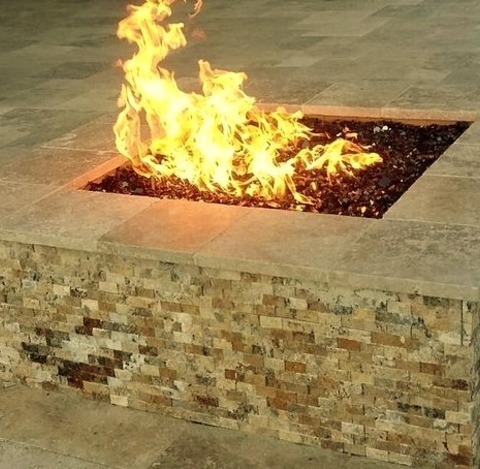
Transitional Landscape - Fire Pit
#This backyard stone landscaping with a fire pit is an illustration of a transitional drought-tolerant and full-sun landscaping style. cactus#travertine pavers#outdoor kitchen#arizona landscape#trilogy
6 notes
·
View notes
Text
The Desert Smells Like Rain
In his book by that title, Gary Nabhan muses about how enigmatic our desert is. He notes that one moment it can smell like dust, and the next “the desert smells like rain.” Except in May. In May this desert never smells like rain. It is the start of the dry season. Dry as in sere and desiccating. Dry as in heat and single digit humidity. But yesterday the heat lifted fluffy cumulonimbus clouds over the mountains, high above the basin floor. And we had a rare May rain. And yes, one moment it smelled like dust. The next, it smelled like rain. It was a balm for the soul.
2 notes
·
View notes
Photo

Front Yard Concrete Pavers (Phoenix)
#Design suggestions for a sizable front yard with concrete pavers that can withstand drought#is in the desert#and receives full sun in the spring. arizona landscape design#landscape front yard#fountain hills#palm trees#front yard#desert landscape
3 notes
·
View notes
Video
Painters Cove by James Marvin Phelps
Via Flickr:
Painters Cove Black Canyon Hoover Dam Nevada - Arizona
#nevada#arizona#hoover dam#intake towers#dam#black canyon#colorado river#lake mead#usa#southwest#water#reservoir#drought#climate change#river#lake#las vegas#photography#bureau of reclamation#lake mead national recreation area#james marvin phelps photography#golden hour#painters cove#flickr
12 notes
·
View notes
Link
No rest for the dreary: Another “atmospheric river” (they mean “high OR conditions”) begins to soak California
Dec. 30, 2022 - Fox Weather
What has been a wet end to 2022 is going to get even soggier... through the weekend, bringing a renewed threat of flooding rains and heavy mountain snows...
Storm totals for Friday through Sunday are around 2-4 inches of rain in the coastal lowlands of southwestern Oregon into Northern and Central California, with higher amounts in the hills...
About 3-5 inches of rain are likely in the inland valleys, including Sacramento, by Saturday night, and about 1-2 inches of rain is likely in Southern California on Sunday. Even the arid areas of Arizona, such as Phoenix and Tucson, will net around a half-inch to an inch of rain from the storm...
The storm will bring 2-5 feet of snow to the highest elevations of the Sierra Nevada, with about a foot of snow at the pass levels, bringing potential travel impacts...
This report gives lots of great figures of upcoming rain and snow totals. It includes the many places we’ve gifted in addition to California. This is just one of many storms past and future this winter and we’re already off to a well above average start.
It also says that scientists say we will pretty much never be out of drought, so it’s not without the usual lies one expects from Fox News. No sane person could call these drought conditions, but the US Drought Monitor is not a measurement of rain, but of business issues usually caused by the government, and water management, which can be as poor as they need it to be to keep increasing water rates.

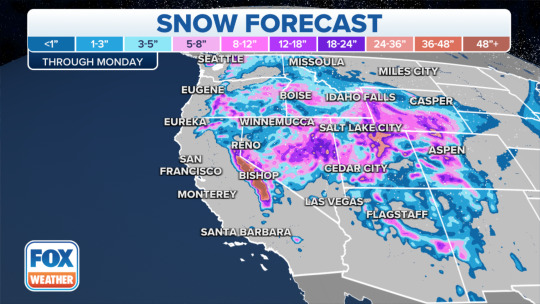


#orgone#orgone energy#orgonite#orgonite gifting#rain#snow#weather#forecast#california#oregon#arizona#los angeles#mountains#sierras#sierra nevada mountains#winter storm#drought#climate
5 notes
·
View notes
Photo

No Volcano
What do you think about my pic?
#Lake Powell#Arizona#Coconino County#Wahweap Overlook#summer 2022#Glen Canyon National Recreation Area#What do you think about my pic?#USA#desert#Colorado Plateau#view#original photography#tourist attraction#landmark#landscape#countryside#drought#lake shore#geology#grass#nature#flora#blue sky#clouds
2 notes
·
View notes
